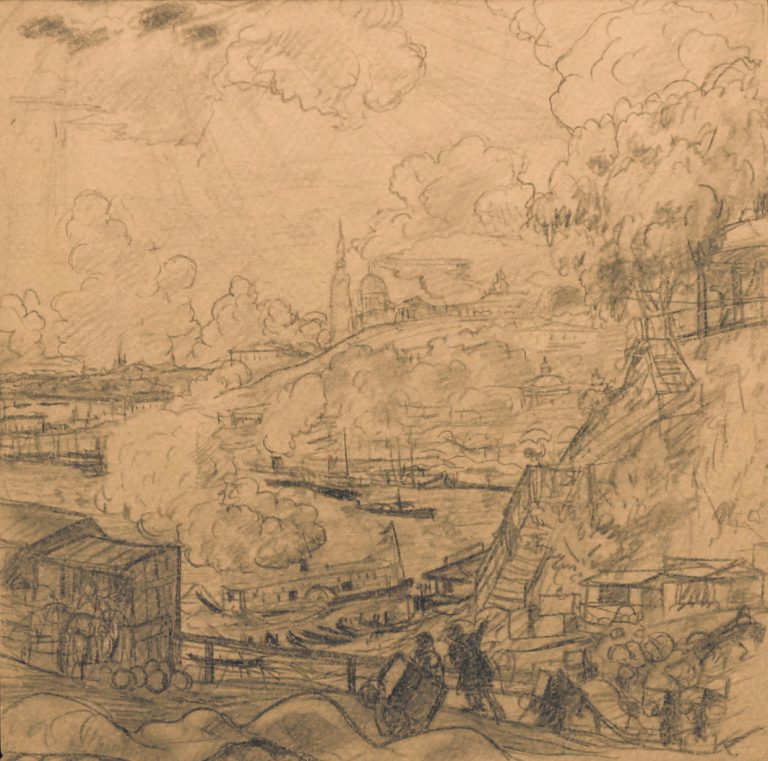Biography
Boris Kustodiev was a renowned Russian painter, graphic artist and stage designer.
Between 1887 and 1892 he studied icon painting at the Astrakhan Theological School and in 1892-1896 at the Astrakhan Theological Seminary. In 1896 he came to St. Petersburg to study at the Imperial Academy of Arts. Two years later he began to take classes from Ilya Repin. In 1900-1903 Kustodiev received a personal scholarship from Nicholas II. Each year he went to work to the Caucasus, Crimea or the Volga region.
Kustodiev’s work A Village Bazaar received a gold medal from the Imperial Academy of Arts. He graduated from the Academy with a title of a “class painter” and the right to go abroad. In 1904, thanks to this privilege, Kustodiev visited Spain and Italy.
After his return to Russia, Kustodiev began to paint scenes from provincial peasant and merchant life. His favourite themes were colourful fairs, carnival festivals with racing troikas and crowds of dressy people, ample Russian women and sedate merchants. Kustodiev painted the poetical world of the Russian province with its original beauty. Another important and, probably, the most tender and intimate theme for him was his family.
In 1907 Kustodiev joined the Union of Russian Artists and in 1910 the renewed Mir Iskusstva. In 1906-1907 his works were shown at the Russian exhibitions in Paris and Berlin organised by Sergei Diaghilev. In 1907 his portrait of Vasily Mate was awarded a gold medal at an exhibition in Venice.
The distinctive features of Kustodiev’s genre paintings were monumentality, decorativeness and deliberate, sometimes brutal vividness of colours. He preserved this manner after the October Revolution and continued to explore in his works his earlier findings. His portraits were completely different: many of them are very sober in colour. In addition, Kustodiev was a brilliant draughtsman, a master of lines and contours. His best works impress with festivity, optimism and love for everything Russian and national.
Kustodiev’s works are present in many museum and private collections, including the Tretyakov Gallery, the Russian Museum, the Pushkin Museum of Fine Arts, the Nizhny Novgorod Museum of Fine Arts and the Kiyv Museum of Russian Art.

